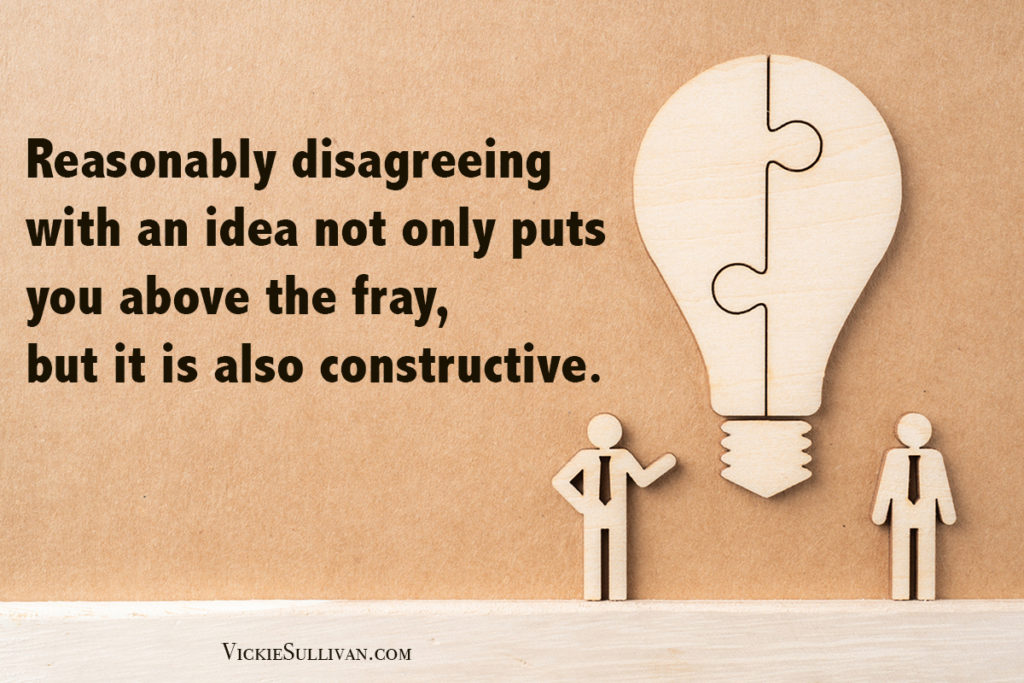Written by: Vickie Sullivan | December 19, 2019
The Delicate Dance of Reasonable Disagreement

As a health-conscious consumer, I’m always interested in the latest studies, especially those that are about nutrition. So this fall, an NPR article about eating red meat got my attention.
While reading for personal reasons, I stumbled upon a tactic we business owners face every day. I call this the “unreasonable, reasonable” request. Using the article as an example, here’s how it works in our world:
A possible client advocates a new approach or outcome (GRADE method) to evaluate/get your help with. On the surface, it sounds quite reasonable. But a closer look reveals a big problem: a difficult journey (can’t implement GRADE on nutritional studies) or risk ahead. If you dissent, you look “unreasonable.” But if you go along with the plan, you’ve just agreed to a standard set-up-to-fail.
What do you do? The NPR article also demonstrates the delicate dance of “reasonable disagreement.” The one-two punch:
• Drill down on the differences. By focusing on how GRADE can’t be implemented effectively, the authors show the one thing that changes everything: This standard isn’t reasonable. How to apply: Get out of the 30,000-foot conversation and into the on-the-ground discussion that highlights the practical impact. That narrow focus can get the conversation back on track.
Listen: How to Say No Without Saying No
• What the differences look like. It’s not enough to explain the downside. You have to paint a vivid word picture. Key quote: “Can you imagine the cost if you had to … give patients red meat almost every day for a decade and then convince the other group … not to eat meat for a decade?” All of a sudden, this standard doesn’t look so reasonable. How to apply: Say to the client, “OK, so that mean we’ll have to do XXX now. Are you sure you want to do that?”
In the public square of ideas, many approaches can look reasonable on the surface but be a disaster on the ground. Finding effective ways to point that out can position your perspective not only as above the fray, but also constructive.
Now Read This:
- Guiding Buyers: 2 Ways to Personalize Your Approach
- Competitive Branding for B2B Professional Service Firms
